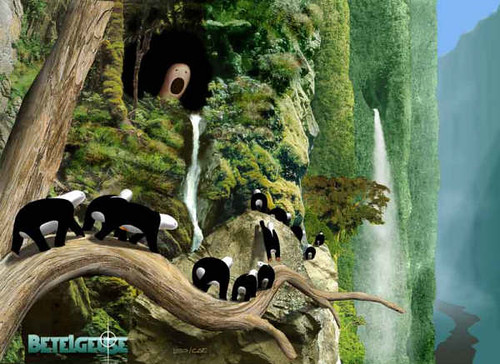Aldebaran and Betelgeuse by the Brazilian and now France-based writer-artist Leo are two linked graphic novels, each of five parts. I referred to them in my piece on their UK publishers Cinebook (which, if you haven't read that post, I suggest you do before continuing). Since then I've read the complete series and I confess to having mixed feelings about them. There is a lot to like and a number of things which niggle or annoy me. First off, some pictures. Some of these are from foreign language sources.
In the English language edition, and despite the 15+ rating, her top is covered up.
Before going into the story, I'll briefly discuss the art. I like the clarity of it. People look like people, unlike the superheroes of American comics. The young woman in the image immediately above is Kim who is the protagonist of the series, aging during the course of it from 13 to her mid-twenties. There's no difficulty in following the story, no attempts at 'clever' or 'arty' layouts.
Leo is also very good at picturing convincing Earth-like but still alien environments and populates with them with some wonderful creatures. I wish more images from the these books were available via Google so I could show you more examples.
There are very few narrative captions and those that are are from a character's point of view. Otherwise, all information is conveyed either through the visuals or through dialogue. And, dear lord, there is so much dialogue that sometimes I was wishing for more narrative to simplify things. With up to nine panels a page on a standard American comic size rather than the larger format of Orbital (see earlier post), the dialogue often squeezes the image, but then that's just two people talking anyway.
The planet Aldebaran is a water world, 90% to 10%. Humans have colonised it for over a century and haven't from Earth in all that time. As a result we have a predominantly rural but also patriarchal and authoritarian society. Our two protagonists, 13 year old Kim and 17 year old Alex, live on a coastal fishing village which is destroyed by some strange creature which may be highly intelligent but impossible to communicate with. They soon find themselves hunted by the authorities because of their contact with a man who had been investigating said creature. They meet a variety of people, grow up considerably and, though the mystery of the creature isn't solved, contact with Earth is restored and at the end their future looks bright.
In Betelgeuse set several years later, they find themselves on another lost colony. This time it's a desert world with another patriarchal authoritarian society living along the banks of a vast fertile and deep river valley while a few dissenters cling to life around the tops of the cliffs. Kim discovers that another of the strange creatures of the same species as the one on her homeworld also lives here. Again the problem is how to communicate with it.
This is almost a very good series and as I've said there's much to like about it. There is, however, too much repetitiveness. The patriarchal authoritarian government is a cliche as it is and to have two of them in succession smacks to me of laziness, lack of imagination, or just preaching and I find that they are more of an irritation in that they get in the way of the story. Kim herself is a good character but, from the time of her first period (and that was not a joke) absolutely every young male she meets (with the initial exception of Alex) falls in love with her, wants to fuck her, or more usually both. Alex doesn't have many problems that way either. Also, as I noted above, in nude scenes in the English editions the nipples are hidden usually by the clumsy addition of a bra or other top. Clearly we aren't as sophisticated as the French or Belgians.
Finally, the way the two series have been published is a bit odd. The first three volumes contain the five parts of the Aldebaran, the first series, with two in each book. Yes, I know that makes six parts. That's because the second series, Betelgeuse, actually begins in vol.3 of Aldebaran. Parts 2 and 3 of Betelgeuse are in vol.1 of the series, with 4 and 5 published as separate vols rather than together as you'd expect. Why didn't Cinebook publish the first 4 parts of the two series in 2 vols each with the part 5 as a separate volume? You'd still have the same number of volumes.
I know that there is another series in the pipeline called Antares and I'll certainly by it. I just hope there's a little more variation than in these books which, despite their flaws, I do recommend.





No comments:
Post a Comment